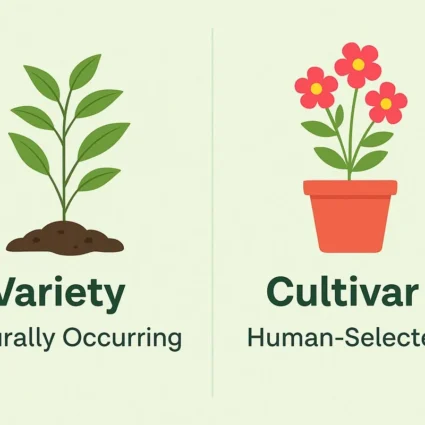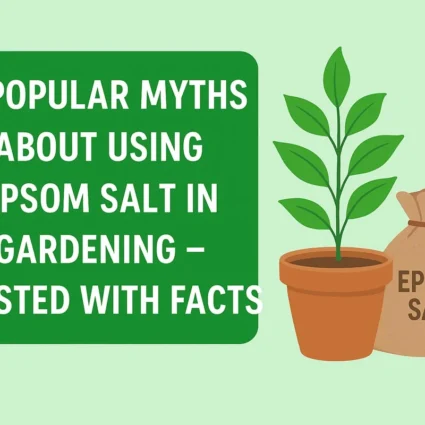
Utilizing Coffee Grounds to Boost Plant Growth
If you’re an avid coffee drinker, you have a steady supply of coffee grounds. While most people discard them as waste, coffee grounds can be a valuable resource for gardeners and plant enthusiasts. These grounds are rich in nutrients and have numerous benefits for your plants. In this blog, we’ll explore how to make the most of your coffee grounds to boost the growth and health of your plants.
What is Coffee Grounds?
Coffee grounds are the leftover coffee residue that remains after brewing coffee. They consist of the coffee grounds themselves, the solid particles that were once coffee beans, and any oils, flavours, and compounds extracted during brewing. Coffee grounds are typically dark in colour and have a gritty texture.
After you brew a pot of coffee, the used coffee grounds are left behind in the coffee filter or the bottom of the coffee maker. These grounds are often discarded as waste. However, they can have several practical uses, including being used as a natural fertilizer for plants, adding flavour to recipes, or even for household cleaning due to their abrasive texture and coffee aroma.
Coffee grounds are a rich source of nutrients, including nitrogen, potassium, and phosphorus, making them a valuable addition to compost piles or as a soil conditioner in gardening. They can also be repurposed creatively in beauty treatments or as a natural deodorizer. Overall, coffee grounds are a versatile and eco-friendly byproduct of brewing coffee.
Also Read This :Discover the Symbolism Behind 11 Orchid Colors
Utilizing Coffee Grounds to Boost Plant Growth
- Nutrient-Rich Soil Amendment
- Improving Soil Structure
- Pest Deterrent
- Compost Boost
- Acid-Loving Plants
- pH Balance
Nutrient-Rich Soil Amendment
Coffee grounds are an excellent source of essential nutrients like nitrogen, potassium, and phosphorus. When you incorporate them into your garden soil, they act as a natural fertilizer. This nutrient boost enhances soil fertility and encourages robust plant growth.
Also Read This :Which Fruits Can Help Control Blood Sugar Levels ?
Improving Soil Structure
In addition to providing nutrients, coffee grounds can improve your soil’s structure. They help to break up compacted soil, allowing for better aeration and water drainage. This primarily benefits plants that prefer well-draining soil, such as succulents.
Pest Deterrent
Coffee grounds can be a natural deterrent for common garden pests like slugs and snails. These critters are not fans of the gritty texture of coffee grounds, so sprinkling them around your plants can help protect them from unwanted munching.
Compost Boost
Coffee grounds are considered ‘green’ material in composting. When mixed with ‘brown’ materials like leaves and cardboard, they create a balanced compost pile. Coffee grounds add nitrogen to the mix, accelerating decomposition and producing nutrient-rich compost that can be used to enrich your garden.
Also Read This :How to make potting mix for your plants
Acid-Loving Plants
Coffee grounds are your new best friend if you have acid-loving plants like azaleas, rhododendrons, or blueberries. They are slightly acidic, making them a perfect soil amendment for these plants. Mix coffee grounds into the soil to create an ideal environment for these acid-loving beauties.
pH Balance
Coffee grounds are slightly acidic, making them ideal for acid-loving plants such as azaleas, blueberries, and rhododendrons. They can help create the acidic soil conditions these plants thrive in.
Also Read This :Growing Petunias: Tips for Starting from Seeds, Cuttings, and Purchased Plants
Boost Your Plant’s Growth with Coffee Grounds: A Step-by-Step Guide
If you’re an avid coffee drinker and a plant enthusiast, there’s a wonderful synergy waiting to happen in your garden. Used coffee grounds, often seen as kitchen waste, can be a secret weapon for nurturing your plants and boosting their growth. In this comprehensive guide, we’ll walk you through the process of using coffee grounds as a natural fertilizer to supercharge your garden.
- Gather Your Materials
- Prepare Your Coffee Grounds
- Choose the Right Plants
- Application Methods
- Maintain Balance
- Experiment and Observe
Step 1: Gather Your Materials
Before you begin, gather the following materials:
- Used coffee grounds (from your morning brews)
- Garden soil or potting mix
- Plants in need of a nutrient boost
- Compost pile (optional)
- Mulch (optional)
Also Read This :Boost Your Blood Flow with These 10 Delicious Fruits
Step 2: Prepare Your Coffee Grounds
Ensure that your coffee grounds are thoroughly cooled and dried. You can collect them over time in a container, allowing them to air dry. Avoid using fresh, wet coffee grounds, as they can be too acidic for your plants.
Step 3: Choose the Right Plants
Not all plants require the same care; some may benefit more from coffee grounds than others. Consider plants like tomatoes, roses, peppers, and acid-loving varieties like blueberries, azaleas, and rhododendrons. These plants tend to thrive in nutrient-rich, slightly acidic soils.
Also Read This :Rare Neelakurinji Flowers Bloom Once Every 12 Years
Step 4: Application Methods
Here are several ways to use coffee grounds as a fertilizer for your plants:
Direct Application
Sprinkle a thin layer of coffee grounds around the base of your plants. Be mindful not to create a thick mound, hindering water penetration.
Incorporate into Compost
Add coffee grounds to your compost pile. They are considered a “green” material and complement the “brown” components like leaves and cardboard. This balance accelerates decomposition and yields nutrient-rich compost for your garden.
Also Read This :30 Stunning Black Flowers and Plants to Beautify Your Garden
Blend with Soil
Mix coffee grounds with your garden soil or potting mix when planting or repotting. Aim for a 20% coffee grounds ratio to 80% soil for optimal results.
Use as Mulch
Coffee grounds make excellent mulch. Spread them around the base of your plants to help retain moisture, suppress weeds, and gradually release nutrients into the soil.
Also Read This :What Are Hydroton Clay Balls and How Do They Work?
Step 5: Maintain Balance
While coffee grounds are beneficial, moderation is key. Using excessive amounts of coffee grounds can make your soil overly acidic. Balance them with other soil amendments and monitor your plants’ responses to find the right mix.
Step 6: Experiment and Observe
Different plants may have varying preferences, so feel free to experiment with coffee grounds. Observe how your plants respond to this natural fertilizer and adjust your application.
Also Read This :Top 10 Vegetables for Weight Loss: Add Them to Your Diet Now!
Things to Keep in Mind:
Don’t overdo it
While coffee grounds are beneficial, excess use can make the soil too acidic. Use them moderately and balance them with other soil amendments.
Used grounds only
Ensure that the coffee grounds you use are already used, as fresh coffee grounds can be too acidic and may harm your plants.
Experiment
Different plants have different preferences, so it’s a good idea to experiment with coffee grounds to see how your specific plants respond.
Also Read This :The Significance and Spiritual Symbolism of the Bodhi Tree
Don’t toss those coffee grounds into the trash—put them to good use in your garden! Using coffee grounds as a natural fertilizer can enhance your plant’s growth, improve soil quality, and contribute to a more sustainable gardening routine. So, the next time you savour your morning brew, remember that your plants can benefit from it too. Happy gardening!




